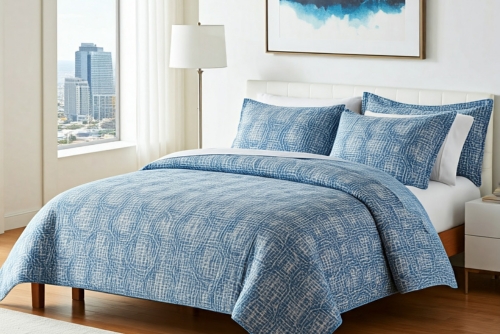
When it comes to creating the perfect sleeping environment, choosing the right bedding is crucial. Whether you’re shopping for duvets, comforters, or quilts, understanding the differences between these options can help you find the most suitable choice for your needs. In this comprehensive guide, we’ll break down everything you need to know about these bedding essentials, from materials and fill types to care instructions and size recommendations. Let’s dive into the ultimate guide for selecting the perfect bedding.
What Are Duvets, Comforters, and Quilts? A Breakdown of Bedding Terms
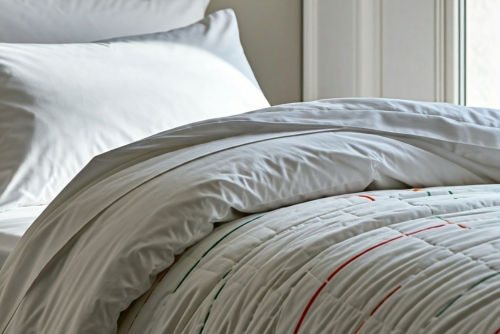
Before diving into specifics, it’s essential to understand the basic definitions. A duvet is a soft flat bag filled with down, feathers, or synthetic fibers, while a comforter is a thick, quilted blanket often filled with down or down alternatives. Lastly, a quilt consists of three layers: a top fabric, a batting layer, and a bottom fabric, stitched together in decorative patterns. Each of these bedding items serves a unique purpose and provides different levels of warmth and comfort.
Understanding the fundamental differences between duvets, comforters, and quilts is key to making an informed decision. Duvets are typically used with a cover and offer the flexibility to change the look of your bedding easily. Comforters, on the other hand, come pre-quilted and are ready to use without any additional cover. Quilts add texture and a layer of warmth and are often chosen for their aesthetic appeal and versatility.
Why Choosing the Right Bedding Matters for Comfort and Sleep Quality
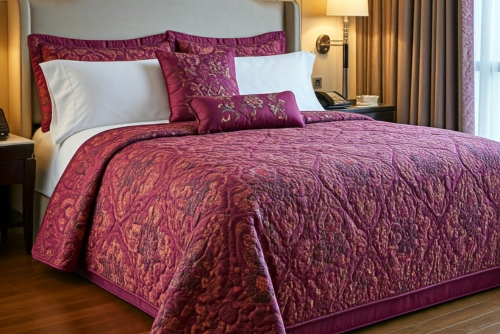
The bedding you choose plays a significant role in your overall sleep quality. From breathability to insulation, the right bedding can help regulate your body temperature and ensure a restful night’s sleep. Whether it's a cold winter night or a warm summer evening, the type of bedding you select can impact your comfort level and sleep quality. Duvets, with their customizable covers and fill types, offer versatility for different seasons and preferences. Comforters provide warmth and coziness without the need for additional covers. Quilts can enhance the visual appeal of your bedroom while keeping you snug.
Selecting the perfect bedding involves considering factors such as materials fill types (down, feathers, or synthetic fibers), care instructions (machine washable). Additionally, it’s important to consider personal preferences, like if you’re a hot sleeper needing lightweight quilts or someone who craves warmth with a down comforter. Selecting the right bedding can significantly enhance comfort.
What Is a Duvet and How Does It Work?
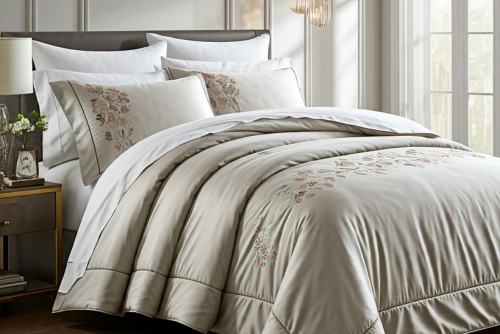
A duvet consists of a soft inner filling, encased in a fabric shell, which is designed to be paired with a removable duvet cover. The benefit of using a duvet lies in its flexibility. You can switch out the cover depending on the season or decor preference. Duvets are typically lightweight yet insulating, making them perfect for year-round use when paired with the right duvet cover sets.
Duvet Covers: Protecting Your Duvet and Adding Style
Duvet covers serve both functional and aesthetic purposes. Not only do they protect your duvet from spills and wear, but they also allow you to update the style of your bedroom quickly. Whether you prefer classic cotton duvet covers or luxurious silk duvet covers, choosing the right fabric can enhance both the look and longevity of your bedding.
Best Duvets for Cold Weather
If you’re someone who experiences cold winters, investing in a feather duvet or down duvet will ensure maximum warmth. These duvets trap heat effectively, keeping you warm and cozy even during the chilliest nights. For those seeking hypoallergenic bedding, consider a down alternative duvet, which offers similar warmth without the risk of allergens.
What Makes a Comforter Different from a Duvet?

A comforter is typically thicker and does not require a cover. It comes pre-quilted and ready to use, making it a convenient option for those who prefer an all-in-one bedding solution. Comforters are available in various materials, from down to down alternatives, catering to different preferences and allergies.
Down Comforters vs. Down Alternative Comforters: Pros and Cons
Down comforters are highly regarded for their softness, breathability, and warmth, making them a popular choice for winter bedding. However, they can trigger allergies in some individuals. In contrast, down alternative comforters are made with synthetic fibers, offering a similar level of warmth while being more affordable and hypoallergenic. Deciding between the two depends on your budget, allergies, and warmth preferences.
All-Season Comforters
If you live in a region with varied climates, an all-season comforter is a versatile choice. These comforters are designed to provide comfort in both warm and cool weather, making them ideal for year-round use. Look for options filled with breathable materials, such as microfiber or cotton blends, to ensure maximum comfort.
How to Wash a Comforter Without Damaging It
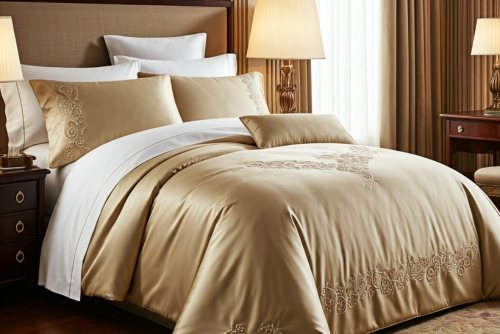
Washing a comforter can be tricky due to its size and material. For down-filled comforters, it’s essential to use a gentle detergent and wash on a delicate cycle. Ensure it is fully dried to avoid clumping of the down filling. Synthetic comforters are easier to care for, often being machine-washable, but always check the care label for specific instructions.
To maintain the quality and longevity of your comforter, it’s important to follow specific steps based on the type of filling and fabric.
For Down-Filled Comforters: Down-filled comforters require extra care to avoid damaging the delicate feathers inside. Use a mild, gentle detergent to prevent the down from losing its insulating properties. Set your washing machine to a delicate or gentle cycle with cold or warm water. Hot water can cause shrinkage or damage to the down filling. It’s also a good idea to run an extra rinse cycle to ensure all detergent is thoroughly washed out.
When drying, make sure the comforter is completely dry to avoid clumping and mildew growth. Use a low-heat setting in the dryer, and toss in a few clean tennis balls or dryer balls to help fluff the comforter and evenly distribute the down. It may take a few cycles to dry fully, but this ensures that the filling remains soft and evenly spread.
For Synthetic Comforters: Synthetic comforters, made from materials like polyester or microfiber, are typically easier to care for. Most are machine washable, but it's crucial to read the care label for specific instructions, as different fabrics may require different care. Use a mild detergent and a regular or gentle cycle with cold or warm water. Avoid using bleach or fabric softeners, as they can break down synthetic fibers over time.
Drying synthetic comforters is generally quicker than down-filled ones. Use a low or medium heat setting in the dryer to prevent melting or damaging the synthetic fibers. Again, tossing in dryer balls can help maintain the loft and avoid clumping of the filling. Synthetic comforters are more resilient to frequent washes, but still, avoid washing them too often to prolong their lifespan.
What Are Quilts and Why Are They a Timeless Choice?
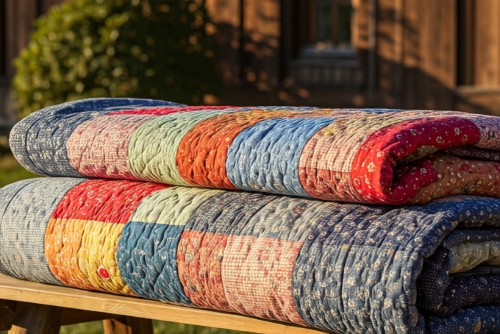
Quilts have been around for centuries, admired for their intricate designs and craftsmanship. Unlike comforters or duvets, quilts have a thinner profile, making them suitable for layering or use during warmer months. They add a touch of traditional charm and are often used as decorative accents in bedrooms.
Cotton Quilts: The Classic Bedding Option
Cotton quilts are a popular choice due to their breathability and durability. They are perfect for year-round use, offering a layer of warmth without being too heavy. Additionally, cotton quilts are easy to care for, making them a practical option for families.
Lightweight Summer Quilts for Hot Sleepers
For those who tend to overheat at night, lightweight quilts are an ideal solution. These quilts are made with breathable materials like cotton or linen, ensuring a cool and comfortable sleep environment. Pairing a lightweight quilt with cotton sheets can help prevent night sweats and keep you feeling refreshed.
Duvet vs. Comforter vs. Quilt: Which One Should You Choose?
Deciding between a duvet, comforter, or quilt ultimately depends on your personal preferences and climate. If you prefer a customizable option, a duvet with interchangeable covers may be ideal. For those seeking convenience, a comforter is ready to go with no additional covers needed. Quilts, on the other hand, offer a versatile, layered look that works well in both traditional and modern bedrooms.
Comforters vs. Duvets
The duvet vs. comforter debate often comes down to flexibility versus convenience. If you like to change the look of your bedding frequently, a duvet with interchangeable covers may be the better choice. However, if you prefer an all-in-one solution, a comforter is easier to manage and maintain.
Quilts vs. Comforters
When choosing between a quilt and a comforter, consider your bedding needs. Comforters are bulkier and provide more warmth, while quilts are thinner and perfect for layering. Quilts also tend to have a more decorative appeal, often used as the finishing touch in bedroom decor.
Fill Materials: Down, Wool, Silk, and Synthetic Options
The type of fill material used in your bedding significantly impacts its warmth, weight, and comfort. Down, wool, and silk are natural fillings that offer superior insulation, while synthetic fibers like microfiber are lightweight, hypoallergenic, and budget-friendly.
- Feather Duvets: A feather duvet offers unmatched warmth and comfort due to its natural insulation properties. The soft feathers trap heat, making it ideal for colder climates. However, it’s essential to fluff your feather duvet regularly to maintain its loft and prevent clumping.
- Wool Quilts: Wool quilts are perfect for eco-conscious shoppers seeking natural, sustainable bedding. Wool is naturally breathable and moisture-wicking, making it an excellent choice for hot sleepers. Additionally, wool is a renewable resource, offering comfort and peace of mind.
- Silk Comforters: For those who prioritize luxury, a silk comforter is the epitome of softness and breathability. Silk is hypoallergenic, making it a great option for allergy sufferers. Its lightweight and smooth texture ensures a comfortable sleep environment, even in warmer temperatures.
- Down Alternative Comforters: If you love the feel of a down comforter but suffer from allergies, a down alternative comforter is an excellent substitute. Made from synthetic fibers, down alternative comforters are hypoallergenic, easy to maintain, and offer similar warmth and comfort.
From King-Size Duvets to Twin Quilts

Selecting the right size for your bedding ensures both comfort and aesthetics. Whether you have a king-size bed or a twin, choosing appropriately sized bedding is crucial to creating a polished look and ensuring full coverage.
How to Choose the Right Bedding Size
When selecting your bedding, consider the dimensions of your mattress, pillows, and any additional layers like mattress toppers. Bedding that is too small can leave your bed looking incomplete, while oversized bedding may drag on the floor, creating a cluttered appearance. Here’s a quick guide to help you choose the right sizes:
- Twin: 39” x 75” mattress requires twin-sized bedding.
- Full/Double: 54” x 75” mattress needs full-sized bedding.
- Queen: 60” x 80” mattress pairs well with queen-sized bedding.
- King: 76” x 80” mattress works best with king-sized bedding.
King-Size Down Alternative Duvets
For those with a king-size bed, a king-size down alternative duvet provides ample coverage and comfort. These duvets are typically designed to fit larger mattresses perfectly, ensuring that you stay warm and cozy throughout the night without compromising style. From king-size duvets to twin quilts, choosing the right size ensures both comfort and style in your bedroom decor. When selecting bedding sizes, remember to match them with the dimensions of your mattress and pillows. Opting for the correct size prevents an incomplete or cluttered appearance in your bedroom.
Luxury Bedding on a Budget: Affordable Quilt Sets for the Bedroom
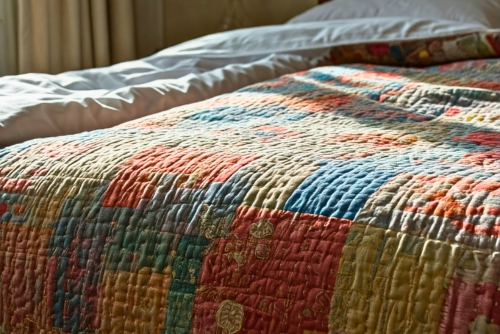
You don’t need to break the bank to enjoy luxurious bedding. Many brands offer affordable quilt sets that combine quality and style. Look for sales and promotions to find luxury bedding options within your budget, enabling you to create a stylish and comfortable bedroom without overspending.
When shopping for budget-friendly options, focus on materials that offer durability and comfort. Microfiber comforters and cotton quilts are often more affordable while still providing excellent warmth and style. Brands that prioritize value often have options that perform well without sacrificing quality.
Seasonal Bedding: Winter Comforters and Summer Quilts for Every Climate
Understanding the seasons can help you make informed choices about your bedding. Winter comforters should be thicker and offer more insulation, while summer quilts should be lightweight and breathable. Switching your bedding with the seasons can enhance your sleep quality and comfort.
Flannel Duvet Covers for Extra Warmth in Winter: For added warmth during the colder months, consider using flannel duvet covers. Flannel is soft, cozy, and excellent at trapping heat, making it a perfect choice for winter bedding. Pairing a flannel cover with a warm duvet ensures you stay comfortable all night long.
Lightweight Quilted Blankets for Summer Comfort: As temperatures rise, lightweight quilted blankets can be a great alternative to heavier options. They offer just the right amount of coverage without overheating. Look for cotton quilts or other breathable materials to keep you cool during those warm summer nights.
Hypoallergenic Bedding: Solutions for Allergy Sufferers
For individuals with allergies, choosing hypoallergenic bedding is crucial. Materials that resist allergens and dust mites can help create a healthier sleep environment. When selecting a duvet, look for options labeled as hypoallergenic. Many brands offer down alternative duvets designed specifically for allergy sufferers, providing warmth and comfort without the risk of triggering allergies.
Regular cleaning is essential for maintaining hypoallergenic bedding. Wash your duvets and comforters according to the manufacturer’s instructions and consider using an allergy-proof cover for added protection against dust mites and allergens.
Bedding Sets: How to Create a Cohesive Bedroom Look
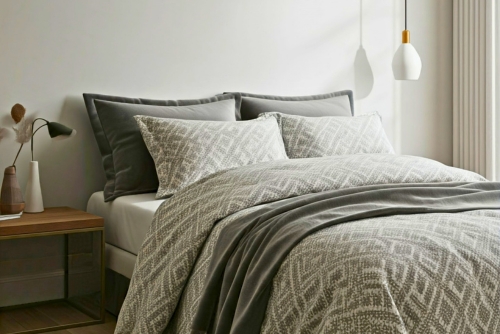
A well-coordinated bedroom can enhance your space's overall aesthetic. Choose matching bedding sets that include everything from comforters to pillow shams for a cohesive look. Reversible duvet cover sets allow you to easily change your bedroom's look without buying new bedding. Opt for designs that feature different patterns or colors on each side to provide versatility in your decor. Pairing quilts with matching pillow shams creates a polished and pulled-together appearance. Look for quilt sets that include shams to simplify your shopping process and ensure a cohesive look.
Eco-Friendly Bedding
Sustainability is becoming increasingly important in the bedding industry. Opt for eco-friendly bedding options that minimize environmental impact without sacrificing comfort. Organic duvets made from natural materials ensure you’re sleeping on products free from harmful chemicals. Look for certifications like GOTS (Global Organic Textile Standard) to guarantee the eco-friendliness of your bedding. When selecting comforters, consider brands that use sustainable practices and materials. Many companies offer eco-friendly comforters made from recycled fibers or natural materials that contribute to a more sustainable lifestyle.
Maintenance Tips for Longevity
Proper care can extend the life of your bedding. Each type of bedding may have specific care instructions, so it’s important to follow the guidelines provided by the manufacturer. To maintain your duvet’s fluffiness, regularly fluff it by shaking it out and airing it. Wash it as recommended and consider using a duvet cover to protect it from dirt and spills. To keep your comforter soft, wash it on a gentle cycle with mild detergent. Ensure it is thoroughly dried to maintain its loft and softness. Using a mattress topper can also help protect your comforter from wear.
Where to Buy the Best Duvets, Comforters, and Quilts Online
Shopping online offers a wide variety of options for duvets, comforters, and quilts. Look for reputable websites that specialize in bedding to find quality products at competitive prices. Some popular online retailers to consider include Amazon, Wayfair, and specific bedding brands like Winsham. These stores often have customer reviews to help you gauge the quality and comfort of your potential purchases. When shopping online, pay attention to materials, thread counts, and customer reviews. Look for detailed product descriptions that specify the fill type, size, and care instructions to make informed decisions.
When it comes to enhancing your shopping experience, many retailers utilize similar technologies to improve customer satisfaction, offering bundles and end-of-season clearance products for unbeatable deals. Some stores require a minimum purchase for free shipping or special discounts, making it easier to save. Signing up for email newsletters can keep you informed about promotions and exclusive offers. Retailers often use a collection of data to personalize your experience, while providing product features like the warmth rating or warmth level for bedding items. From polyester comforters to coverlets, or even geese-down duvets, you’ll find products suited for every season, including cooling options for hot climates. Shoppers can expect a higher quality of sleep with the right bedding materials. Don’t forget to check your email for special promotions!
FAQs: Common Questions About Duvets, Comforters, and Quilts
What is the difference between a duvet, a quilt, and a comforter?
A duvet is a soft, flat bag filled with down, feathers, or a synthetic alternative, typically used with a removable duvet cover. A quilt consists of three layers: a top layer, batting, and a backing, sewn together in a decorative pattern. A comforter is similar to a duvet but is often used without a cover, as it has a finished outer layer.
Do you need a duvet cover for a comforter?
No, a duvet cover is specifically designed for a duvet, while a comforter usually has a sewn-on outer fabric. However, some people choose to use covers with comforters for added protection and style.
Are quilts warmer than comforters?
It depends on the fill material and construction. Comforters are generally warmer because they are thicker and filled with insulating materials like down or synthetic fibers. Quilts, on the other hand, tend to be lighter and are better for layering.
How often should you wash a duvet or comforter?
For most duvets and comforters, washing them every 6 months is sufficient, though duvet covers can be washed more frequently. Always check the care label for specific washing instructions to avoid damage.
Can you use a quilt as a duvet?
While a quilt can be layered for warmth, it doesn’t provide the same insulation as a duvet. You can use a quilt as a lightweight bedspread or layer it over a duvet for added texture and warmth.
What’s the best filling for a duvet?
The best duvet filling depends on personal preference. Down is lightweight and provides excellent insulation, while down alternative fillings are great for allergy sufferers. Wool and silk duvets are breathable and hypoallergenic, offering comfort year-round.
Which is better for winter: a duvet or a comforter?
A duvet with a high fill power or a down comforter is often best for winter, as these options trap heat more efficiently. For colder months, look for bedding labeled as winter comforters or duvets with thicker fillings.
How do you fluff a down comforter?
To fluff a down comforter, shake it out daily to redistribute the fill. You can also place it in the dryer on a no-heat cycle with a few tennis balls to help restore its loft.
How long does a duvet last?
A high-quality duvet can last up to 15 years with proper care. It's important to use a duvet cover and wash the duvet according to manufacturer instructions to extend its lifespan.
What’s the most comfortable comforter material?
Cotton, down, and down alternatives are among the most comfortable materials for comforters. Cotton provides breathability, while down offers superior warmth and softness. For hypoallergenic options, look for down alternative comforters.
Are duvets more expensive than comforters?
Duvets can be more expensive, especially those filled with premium down or silk. However, since you can change the look of a duvet with different covers, it can be a more versatile and cost-effective option over time.
Can quilts be used in summer?
Yes, quilts are a great option for summer, especially lightweight cotton quilts. They offer just the right amount of warmth without causing overheating.
How to keep a comforter from slipping inside a duvet cover?
To prevent a comforter from slipping inside a duvet cover, look for covers with corner ties or clips. These secure the comforter in place and keep it evenly distributed.
What size duvet should I get for my bed?
It’s best to choose a duvet slightly larger than your mattress for full coverage. For example, a king-size duvet works well on a king bed, while a queen-size duvet is ideal for a queen bed. Always check the dimensions before purchasing to ensure a proper fit.
Are comforters machine washable?
Most comforters are machine washable, but always check the care label. Use a large-capacity washing machine and gentle cycle, and dry the comforter on low heat or air dry.
Choosing the Perfect Bedding for Your Needs and Style
Choosing the right bedding can transform your sleep experience. By understanding the differences between duvets, comforters, and quilts, you can make an informed decision that meets your comfort needs and enhances your bedroom’s aesthetic. Remember to consider your local climate, personal preferences, and lifestyle to find the perfect bedding for your home. With the right choice, you'll enjoy restful nights and cozy mornings for years to come.
Ready to elevate your bedding experience? Discover the perfect duvets, comforters, and quilts that suit your style and needs at Winsham.com! Explore our wide selection of high-quality bedding options that combine comfort, style, and sustainability.
Don’t forget to follow us on our social media pages for the latest updates, exclusive offers, and tips on creating the perfect sleep sanctuary. Join our community today and transform your bedroom into a haven of relaxation! Visit us now at Winsham.com and stay connected!

